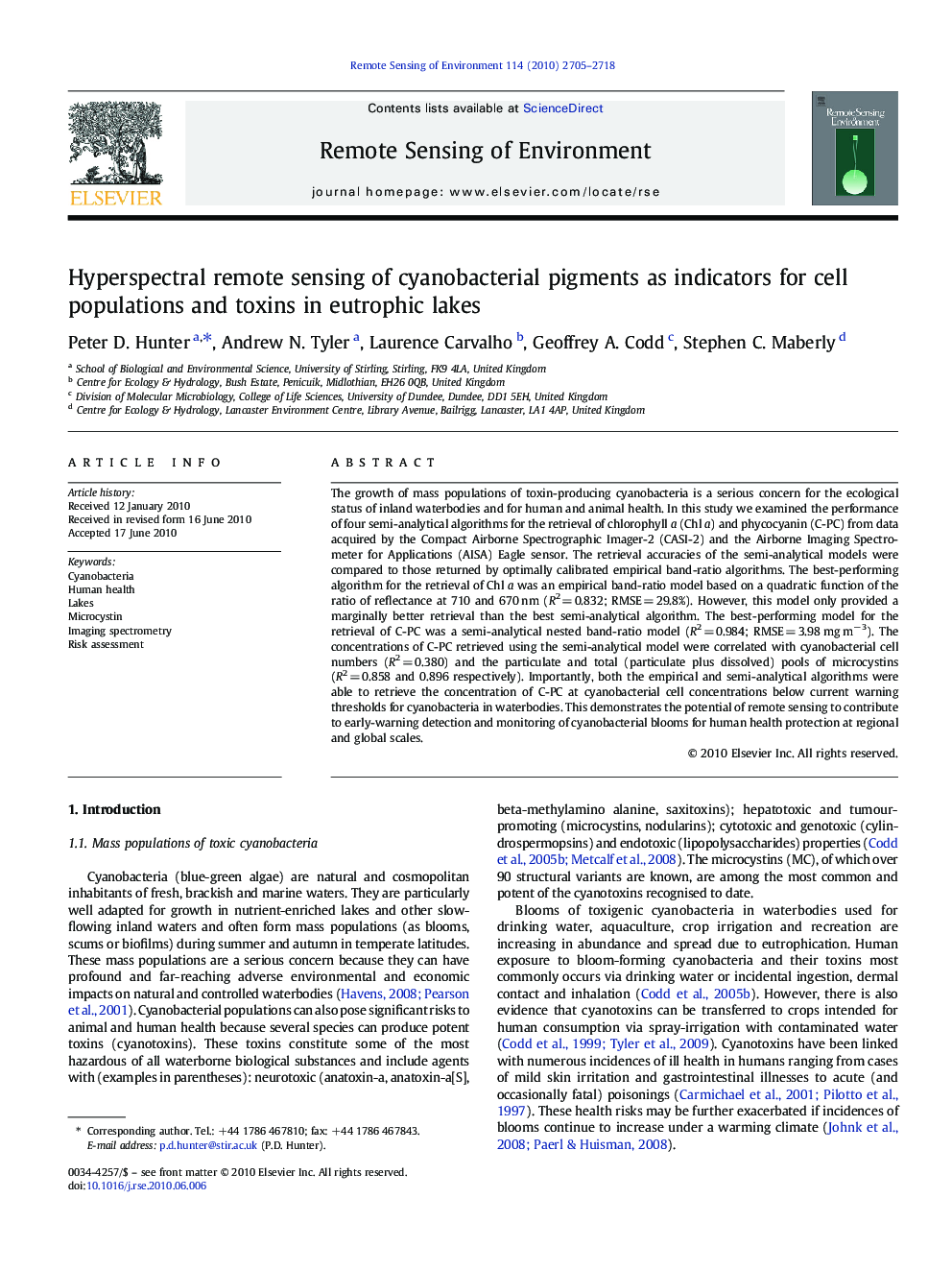| Article ID | Journal | Published Year | Pages | File Type |
|---|---|---|---|---|
| 4459842 | Remote Sensing of Environment | 2010 | 14 Pages |
The growth of mass populations of toxin-producing cyanobacteria is a serious concern for the ecological status of inland waterbodies and for human and animal health. In this study we examined the performance of four semi-analytical algorithms for the retrieval of chlorophyll a (Chl a) and phycocyanin (C-PC) from data acquired by the Compact Airborne Spectrographic Imager-2 (CASI-2) and the Airborne Imaging Spectrometer for Applications (AISA) Eagle sensor. The retrieval accuracies of the semi-analytical models were compared to those returned by optimally calibrated empirical band-ratio algorithms. The best-performing algorithm for the retrieval of Chl a was an empirical band-ratio model based on a quadratic function of the ratio of reflectance at 710 and 670 nm (R2 = 0.832; RMSE = 29.8%). However, this model only provided a marginally better retrieval than the best semi-analytical algorithm. The best-performing model for the retrieval of C-PC was a semi-analytical nested band-ratio model (R2 = 0.984; RMSE = 3.98 mg m−3). The concentrations of C-PC retrieved using the semi-analytical model were correlated with cyanobacterial cell numbers (R2 = 0.380) and the particulate and total (particulate plus dissolved) pools of microcystins (R2 = 0.858 and 0.896 respectively). Importantly, both the empirical and semi-analytical algorithms were able to retrieve the concentration of C-PC at cyanobacterial cell concentrations below current warning thresholds for cyanobacteria in waterbodies. This demonstrates the potential of remote sensing to contribute to early-warning detection and monitoring of cyanobacterial blooms for human health protection at regional and global scales.
